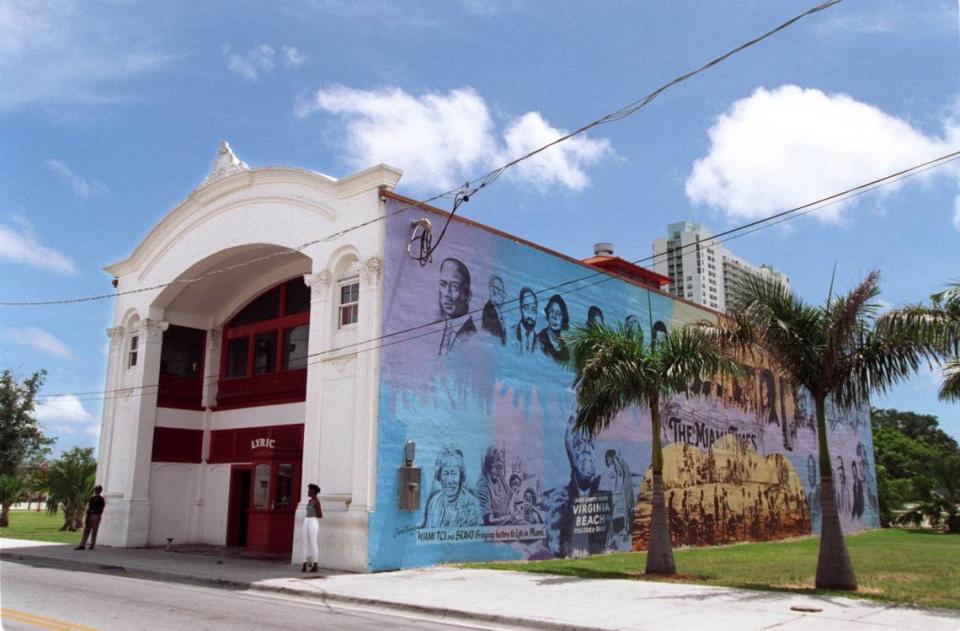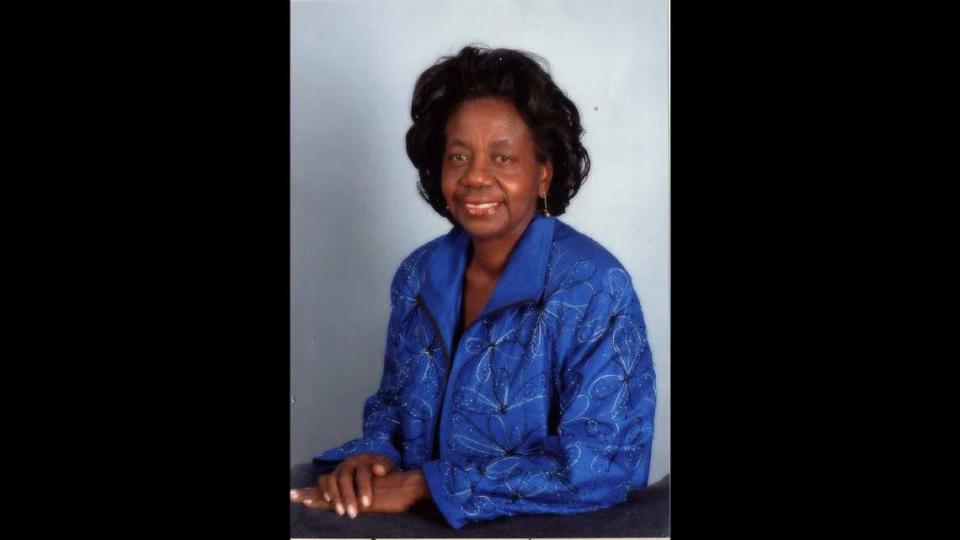The Historic Lyric Theater in Overtown — an example of Black resilience — fell into disrepair. Here’s how I worked to save it | Opinion
Motivated by stories told to me in the 1970s and 1980s by pioneer residents of Miami’s Colored Town, now known as Overtown, I saved the historic Lyric Theater from destruction as an example of resilience in Black Miami during the 20th century.
Those who knew Gedar Walker, the businessman who built the Lyric Theater in 1913, recalled the concern he and his wife, Henrietta, showed for the community. Their businesses provided food, entertainment and employment for residents. With pride, the pioneers said, “Mr. Gedar Walker built the Lyric Theater for the community; it must not be torn down. It must be saved.”
In 1980, while driving by the then forsaken Lyric Theater, I saw an attached notice stating that the structure was scheduled to be condemned. Having heard the pioneer stories the notice became my personal Call to Action.
For nearly two decades, as a volunteer and on my own, I decided to take action and began researching Miami’s local Black history. As a full-time employee of Dade County Public Schools, after getting my family settled, I stayed up from midnight until 6 a.m. for nearly a decade figuring out how to save the county’s Black history
I had already established The Black Archives by assembling a board of directors and a board of trustees from the community. With their encouragement, I presented the theater’s history before the Zoning Department. The presentation stopped the demolition. Later, I wrote the grant to the state requesting funds to purchase the theater, wrote the first grant to the City of Miami to restore the original theater, led the board in hiring staff, accepted money from my mother’s pension to pay staff salaries and conducted the research for the Lyric Theater’s National Register designation report. The rest is history.
In 1974 when I called the main library downtown asking for books about local Black people, I was told, “we only have a folder with obituaries… I guess those people don’t care enough about themselves to write their history.” That was absolutely not true. Those words coupled with the pioneer stories propelled me into Black History. It became my life’s work — not a job or career, but the soul of my being.
It became important for me to seek formal training. Instead of assuming that I knew what to do, I sought academic training as the Black Archives Historic Lyric Theater evolved. I earned a certificate in archives administration and secured student loans and finances from my family to earn a master’s degree in curriculum and instruction; and then I completed coursework for a doctorate in public administration. At age 50, I returned to graduate school and earned a Ph.D. in public history.
The Black Archives, home of the historic Lyric Theater, is built on scholarship for the purpose of recording the history or the Black experience in Dade from 1896 to the present. As the founder, I pledge appropriate infrastructure, accountability and transparency of this organization to the community.

Throughout the decades my biggest supporters and cheer leaders were my mother, Dorothy J. McKellar; my mother’s oldest brother, Dr. S. H. Johnson, M.D.; and advisor to my doctoral committee, scholar historian Dr. John Hope Franklin, Ph.D.
Individually and collectively, the pioneer stories were compelling. Among those who shared stories were Stanley Sweeting, Miami Times columnist; Marie White, nurse; Atri Richardson, funeral director; Elaine Johnson Adderly, home economics teacher and nursery school teacher; Roberta Johnson Thompson, elementary school teacher, and Dr. S. H. Johnson, a board-certified medical doctor and South Florida’s first Black Radiologist. Adderly and Thompson were my mother’s sisters.
The pioneers fondly recalled Mrs. Walker was fashionable wearing wigs and long bouffant dresses adorned with jewelry. Before World War I, the Walkers traveled to Paris, France, then returned to Miami’s Colored Town/Overtown, sharing stories about the fashions they saw and opera houses they visited. Not long after that, Walker built the Lyric Theater next to his ice cream parlor and cafe on Avenue G, now Northwest 2nd Avenue between 8th and 10th streets adjacent to downtown Miami.
This was the Jim Crow era in the United States when Black people and White people were separated by law and custom. Hence, Colored Town was assigned and restricted to Colored people, then called Negroes. During that era, Black male laborers from the southern states and the Bahamas living in Overtown and Coconut Grove were the primary workforce in Miami-Dade County.
In addition to the Lyric Theater these laborers were mainly responsible for the construction of historic sites throughout Miami-Dade County including Villa Vizcaya in 1910; the Miami Woman’s Club in 1913; Plymouth Congregational Church in 1917; the Freedom Tower in 1925; The Kampong, David Fairchild’s home in 1928; Fisher Island, William K. Vanderbilt’s estate in 1929, Booker T. Washington Jr./Sr. High School (original building) in 1926; and Miami Senior High School (new building) in 1928.
Black laborers built the Lyric Theater. Blacks managed and operated it, too. Indeed, this was a source of community pride when it opened for vaudeville shows and silent movies. According to a full-page ad in a 1915 edition of The Miami Metropolis (forerunner of The Miami News) “[the Lyric Theater] is equipped with everything that is needed for modern theatrical performances. It is now, and always has been, operated by competent negro men. Its moving picture machines are thoroughly understood by its well trained negro operators.”
Except for a short time in the 1950s when the Lyric Theater was owned and operated by WOMETCO enterprises, it was operated and managed by residents from our community. At one time, some of the operations of the Lyric Theater were handled by members of the Eve family, pioneer residents of Colored Town/Overtown. For many years, brothers Charles and Nathaniel Eve operated the movie projectors and their sisters Lillian and Beatrice Eve collected tickets at the booth. One of their great grandnieces is Davyre Gibson Smith, daughter of Vennda Rei Harris Gibson and granddaughter of Millicent Louise Eve Spicer. Available on Amazon Davyre’s 2021 memoir titled, The Women Who Raised Me, highlights the women in her ancestral village.
The tradition of hiring and training neighbor residents at the theater continues. Former Black Archives Historic Lyric Theater Executive Director Timothy Barber glamorized the theater’s interior and hired community residents for operations. Executive Director Kamila Pritchett continues that practice. Many others have contributed to the Lyric Theater’s success. Thank you all!
In the midst of gentrification and redevelopment, the historic Lyric Theater continues to stand majestically in Miami’s Overtown as a physical reminder of what came before us. Located two blocks north of the Brightline train station and Metrorail to the airport, it connects us to the global future providing a sense of identity and continuity for future generations. Long live the historic Lyric Theater!

Dorothy Jenkins Fields, Ph.D. is a public historian, certified archivist and founder of The Black Archives, History & Research Foundation of South Florida, Inc.

